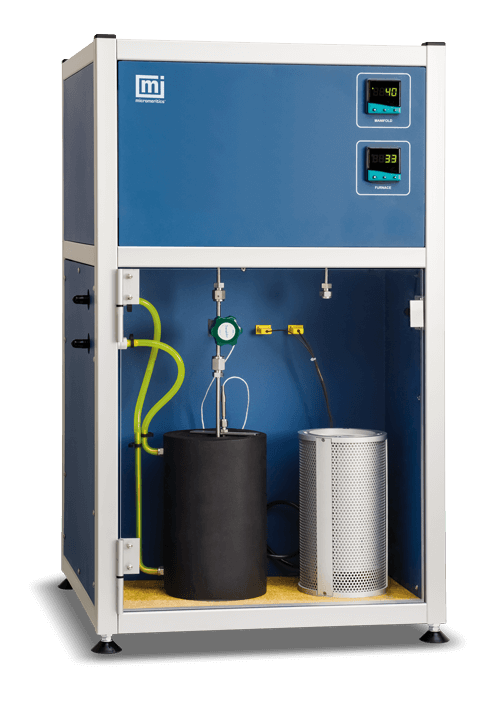
The HPVA II uses the static volumetric method to obtain high pressure adsorption and desorption isotherms utilizing gases such as hydrogen, methane, and carbon dioxide. Analyze a variety of materials including MOFs, zeolites and microporous carbons using just a few milligrams of sample. Obtain a better understanding of applications such as hydrogen storage, carbon dioxide sequestration, fuel cells and batteries, and hydrocarbon traps.
For extensive hydrogen storage studies at high pressures and low temperatures, the HPVA II can be interfaced with a cryostat to control analysis temperatures down to 30 K with a stability of ±0.003 K. The cryostat does not require liquid cryogens for operation; instead, it utilizes the Gifford-McMahon refrigeration cycle where pressurized helium is supplied from a compressor to produce cold temperatures. The HPVA II software communicates directly with the cryostat temperature controller allowing for precise temperature measurements recorded over the duration of the adsorption experiment. Generating hydrogen adsorption isotherms at multiple cryogenic temperatures presents researchers the advantage of more accurately calculating the isosteric heats of adsorption of hydrogen on their materials of study.
Evaluating the quantity of carbon dioxide that can be adsorbed by carbons...
+Determining the hydrogen storage capacity of materials such as porous carbons and...
+Porous coal samples from underground beds can be analyzed with the HPVA...
+High-pressure methane can be dosed onto shale samples to generate adsorption and...
+| Height | 88.9 cm (35 in.) |
| Width | 50.8 cm (20 in.) |
| Depth | 50.8 cm (20 in.) |
| Weight | 27.2 kg(60 lbs) |
| Temperature | 10 to 45℃ (50 to 113oF), operating |
| Voltage | 100 – 240 VAC |
| Frequency | 50 to 60 Hz |
Provided specifications were valid as taken from available documents at time of publication. These specifications may change without notice and are only provided as a general reference
Request a quote or talk to an expert for more information
to stay connected to product news, software updates, and the latest scientific resources
Copyright © 2025 Micromeritics Instrument Corporation